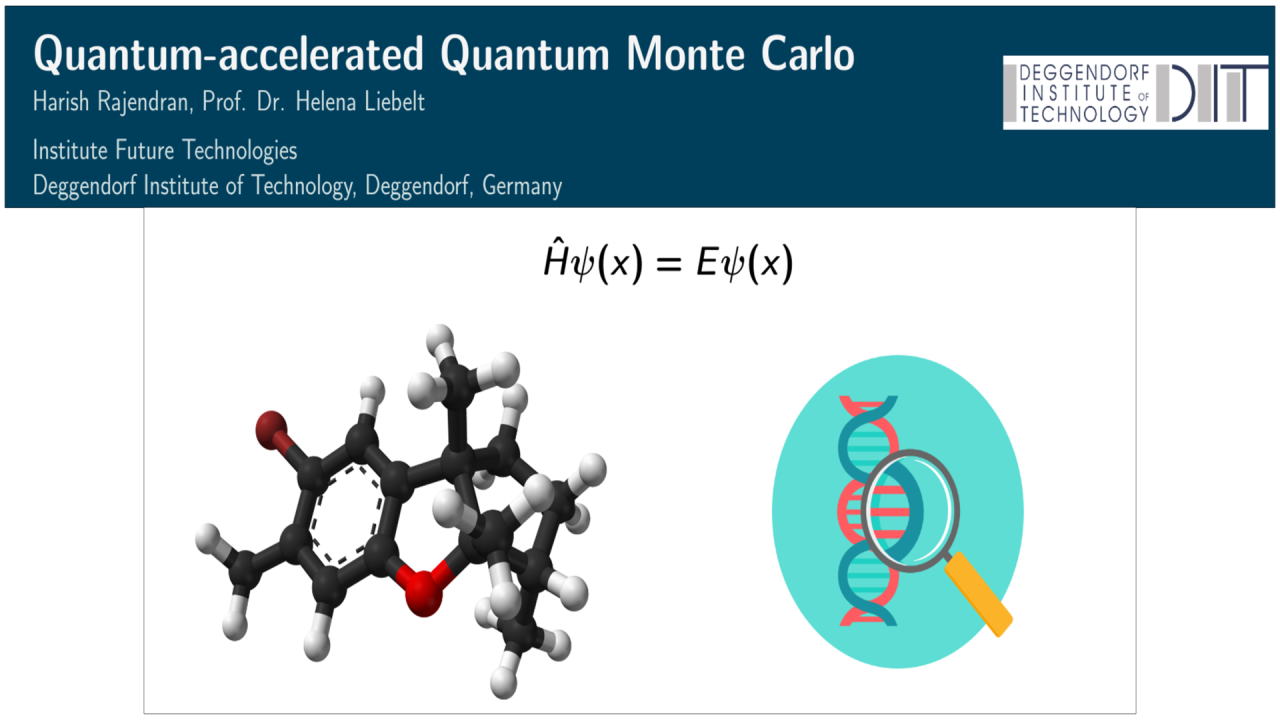

Quantum-Accelerated Quantum Monte Carlo
Tuesday, June 10, 2025 3:00 PM to Thursday, June 12, 2025 4:00 PM · 2 days 1 hr. (Europe/Berlin)
Foyer D-G - 2nd floor
Research Poster
Quantum Computing - Use CasesSimulating Quantum Systems
Information
Poster is on display and will be presented at the poster pitch session.
Accurate determination of ground state energy of an electronic structure is a computationally expensive task due to the intense mathematical calculations behind it. If determined accurately, profound progress can be achieved in the fields of Quantum Chemistry, Solid state physics and Materials science. Conventional classical techniques suffer from their inability to handle electron correlation in large systems, resulting in approximate estimates. Auxiliary-Field Quantum Monte-Carlo (AFQMC) is a powerful technique for simulating fermionic quantum systems, by sampling the many-body wavefunction in imaginary time. Its accuracy largely depends on the trial wavefunction chosen; hence, this work explores Unitary Coupled Cluster Singles and Doubles (UCCSD), and Perfect Pairing (PP) wavefunctions on H2 as a case study. This work shall serve as a stepping-stone for applying this technique to larger systems, thereby contributing to computational quantum chemistry.
Accurate determination of ground state energy of an electronic structure is a computationally expensive task due to the intense mathematical calculations behind it. If determined accurately, profound progress can be achieved in the fields of Quantum Chemistry, Solid state physics and Materials science. Conventional classical techniques suffer from their inability to handle electron correlation in large systems, resulting in approximate estimates. Auxiliary-Field Quantum Monte-Carlo (AFQMC) is a powerful technique for simulating fermionic quantum systems, by sampling the many-body wavefunction in imaginary time. Its accuracy largely depends on the trial wavefunction chosen; hence, this work explores Unitary Coupled Cluster Singles and Doubles (UCCSD), and Perfect Pairing (PP) wavefunctions on H2 as a case study. This work shall serve as a stepping-stone for applying this technique to larger systems, thereby contributing to computational quantum chemistry.
Format
On DemandOn Site
